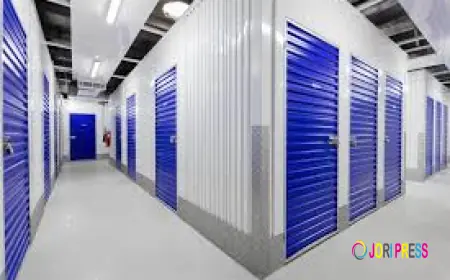Tractor Head
Tractor Head
Understanding the Tractor Head: The Powerhouse of Modern Freight Transport
In the world of logistics and heavy-duty transportation, few machines are as essential and iconic as the tractor head. Often referred to as a prime mover, semi-truck, or simply a Tractor Head, the tractor head serves as the backbone of freight transport, pulling trailers loaded with goods across vast distances.
This article explores the design, function, uses, maintenance needs, and global significance of the tractor head in today's commercial transport landscape.
What Is a Tractor Head?
A tractor head is a motor vehicle engineered specifically to tow a trailer. It is the front portion of a semi-truck, containing the engine, driver’s cab, and connection mechanisms such as the fifth-wheel coupling. Unlike rigid trucks, the tractor head is designed to be paired with one or more semi-trailers that it pulls over long distances.
Key Characteristics:
-
Engine-powered cab for the driver and vehicle controls.
-
Fifth-wheel coupling to attach and detach different trailers.
-
Heavy-duty drivetrain and chassis to support large loads.
-
Aerodynamic design (in modern models) for fuel efficiency.
Design and Engineering
Modern tractor heads are marvels of engineering, built to be durable, efficient, and capable of handling massive loads.
1. Chassis and Frame
The frame is built using high-tensile steel to support the weight of the engine and cargo. It includes mountings for axles, suspension systems, and drivetrain components.
2. Engine and Transmission
These vehicles are typically equipped with diesel engines ranging from 400 to 600 horsepower. The torque output is crucial for pulling heavy trailers, and transmissions often include 10 to 18-speed gearboxes, either manual or automated manual (AMT).
3. Cab Configurations
-
Day Cab: No sleeping space, for short-haul trips.
-
Sleeper Cab: Equipped with a bunk or living area for long-haul drivers.
-
High-Roof Sleeper: Extra space and amenities for long-distance comfort.
4. Axles and Wheels
Tractor heads come in various axle configurations such as 4x2, 6x2, 6x4, depending on the weight and terrain requirements. More axles allow for better load distribution and off-road capability.
Functions and Applications
The tractor head is used across industries and geographies, serving critical roles in transportation and logistics:
-
Freight Hauling: Moving containers, dry vans, flatbeds, and tankers.
-
Construction: Towing equipment trailers and dump trailers.
-
Agriculture: Transporting produce or machinery.
-
Oil and Gas: Hauling specialized trailers to remote sites.
Interchangeability
One major advantage is the ability to detach and reattach different trailers. This flexibility makes tractor heads ideal for multi-modal transport systems, where cargo is transferred between ships, rail, and trucks.
Benefits of Using a Tractor Head
-
Flexibility in Freight Handling: One tractor can haul various trailer types.
-
Cost Efficiency: Reduces the need for multiple full-body trucks.
-
Easier Maintenance: Only the head requires engine servicing.
-
Long-Distance Capability: Designed for highway endurance and fuel economy.
-
Upgradable Tech: Modern heads come equipped with telematics, GPS, ADAS (Advanced Driver-Assistance Systems), and improved aerodynamics.
Maintenance and Lifespan
Regular maintenance ensures safety, fuel efficiency, and regulatory compliance. Common maintenance areas include:
-
Engine and oil system
-
Transmission and clutch
-
Tire pressure and wear
-
Brake systems
-
Electrical systems
-
Fifth-wheel coupling and chassis components
Average Lifespan
With proper care, a well-maintained tractor head can last between 1,000,000 to 1,500,000 kilometers or around 10 to 15 years, depending on usage and terrain.
Environmental Considerations
While traditionally powered by diesel engines, modern tractor heads are being designed with sustainability in mind:
-
Electric Tractor Heads: Companies like Tesla and Volvo are developing battery-electric models for short- to medium-haul routes.
-
Hydrogen Fuel Cell Trucks: Promising for longer distances due to faster refueling.
-
Emission Standards: Manufacturers are upgrading engines to meet Euro VI and EPA standards, reducing NOx and particulate emissions.
Trends in the Tractor Head Market
-
Autonomous Driving: Major manufacturers are investing in semi-autonomous systems to increase safety and efficiency.
-
Digital Fleet Management: GPS tracking, fuel monitoring, and predictive maintenance via AI.
-
Lightweight Materials: Using composites and aluminum to reduce vehicle weight and increase payload capacity.
-
Regional Growth: Asia-Pacific, especially China and India, are seeing significant growth in tractor head sales due to infrastructure development.
Conclusion
Tractor Head is far more than just the front of a truck — it is a symbol of industrial power and a vital part of the global supply chain. Its adaptability, durability, and evolving technology make it indispensable for transporting goods efficiently and safely across vast distances.
As the world moves toward cleaner energy and smarter logistics, the humble tractor head is transforming into a high-tech, eco-friendly, and intelligent freight machine, ready to meet the challenges of the 21st century.
What's Your Reaction?
 Like
0
Like
0
 Dislike
0
Dislike
0
 Love
0
Love
0
 Funny
0
Funny
0
 Angry
0
Angry
0
 Sad
0
Sad
0
 Wow
0
Wow
0
















































